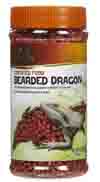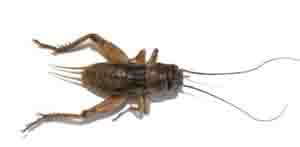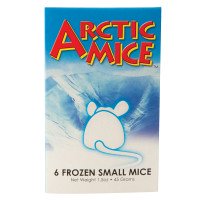Best Lizard Food and Diet
In general the best lizard food or diet depends on the specie of lizard and how they eat when not in captivity. That said, lizards that are primarily meat eaters in the wild (carnivores), may eat vegetables on occasion. The same is true for plant eaters or herbivores that might eat small insects for protein. Veterinarians don't fully understand how lizard health and diseases is effected when a diet fed in captivity is more varied than a lizard's natural diet.
Check with your vet for the ideal diet for your species. Note that some species, such as the Bearded dragon are carnivores as juveniles and then become herbivores in adulthood.

Lizard Food Made For a Specific Species is Formulated with the Optimal Balance of Vitamins and Minerals such as this product for Bearded Dragons, but there is some debate as to whether the lizard should be fed a wide variety of natural foods as well.
Source: Amazon
Lizards kept in a home aquarium also may not get the natural light levels that would be found in nature. The lack of light results in certain vitamin deficiencies that need to made up for in the diet. We do know that lizards in captivity often require supplements, which include calcium and a multi-vitamin.
There is some new research on feeding that may contradict the advice received from a local pet store.
What we do know:
- Feeding only 1 food can result in problems. For example, feeding only pinkie mice can result in obesity and higher than normal fat intake. This is particularly true when in the wild a lizard primarily eats insects, and now is eating small mice.
- Lizards that only eat plants in the wild (herbivores) should not be fed a diet that is primarily the opposite, low fat pet food (dog, cat), mice, crickets, mealworms etc.
- The effects of feeding the wrong diet may cause a slow decline in lizard health, vs anything that can be quickly noticed via signs such as changes in behavior or eating habits.
- Each specific food has different vitamin levels. Some have no nutritional value, while others are calcium rich
- If you feed wild rodents, make sure that they did not ingest any
mice or other rodents that consumer mouse poison
- Experiment with different foods and check with lizard health
professionals for the best diet. Review the information on each
specie found on this site or use the search box.
- desert
lizards food
- water lizards food
- savanna lizard food
- woodland lizard food
- Commercial complete diets that have protein levels of 28% to 32% may result in later diseases such as hyperuicemia
- Every captive lizard should receive a lizard multi-vitamin supplement to avoid bone diseases and hormonal disorders
- Avoid wild insects if they live in areas sprayed with insecticides
In general, the ideal lizard diet is still being researched by veterinarians and scientists. One approach is to ask your veterinarian or pet store owner for the latest research. You can also ask a question using the form at the bottom of this page or if you need a quick response, use this online veterinary service that is available now for questions and immediate answers.
Lizard Food Nutrient Levels
Lizards and Dietary Protein:The following are the latest recommendations for protein levels in a reptile or lizard diet.
| Type
of Lizard |
Recommended
Protein Ratio in Diet |
| Omnivores and Carnivores |
18% to 20% |
| Herbivores |
11% to 12% |
Note that many commercial reptile or lizard diets have a ratio of 28%
to 32%, which may lead to health problems such as hyperuricemia.
Fiber:
Lizards that eat plants could benefit from some fiber to aid the digestive tract such as hay.Fatty Requirements:
While there aren't specific recommendations, some veterinarian's believe that a lizard should have .2% linoleic acid to avoid artheroscelrosis (when fat is deposited on the walls of arteries from higher cholesterol levels in the diet).
Lizard Calcium, Vitamin D and Mineral Levels:
Many captive lizards suffer from mineral deficiencies. For example, feeding a lizard a diet high in meat protein without anything else results in low calcium levels. This is also true in lizards that primarily eat insects, since the insect skeleton does not retain calcium. For this reason, pet stores recommend that insects such as crickets be gut loaded (insects fed right before feeding to lizard), and that they should be powdered with calcium.
Because of this a vitamin/mineral supplement such as Exo is added to the diet. Lizard health depends on the right balance of calcium vitamin D and phosphorus.
Lizards and Vitamin D: All lizards require Vitamin D in order to metabolize any ingested calcium. Vitamin D is naturally manufactured by the lizard's body when exposed to ultraviolet light or unfiltered (not through glass or plexiglass) natural sun. The method at which your lizard gets vitamin D varies by diet and natural or ultraviolet light exposure along these general guidelines:
- Lizards that Each Whole Mice or Other Animals: Usually receive enough vitamin D from the diet and do not require a supplement
- Insectovorous Lizards: Gut loaded insects (just fed) and powdering of Calcium/Vitamin D supplement on food/insects
- Herbevorous (plant eating) lizards with limited UVB (ultra violet light) exposure: Provide vitamin D/Calcium supplements
Note that it is important not to overdose vitamin D or calcium. Too much vitamin D, calcium or phosphorus can results to hormonal imbalance resulting in the levels of calcium, phosphorus or magnesium become elevated. Conversely, not getting enough will also result in hormonal problems. The result will be weakened lizard bones, particularly in the jaw (bone softening called osteomalacia). Other problems that could result include kidney stones, rickets and broken bones. Symptoms of a mineral overdose in lizards includes seizures and muscle contractions that do not return to the normal state.
A typical recommendation for herbivores is to receive a mineral supplement such as Rep-cal phosphorous free calcium supplement provided 3x per week.
If you see any of these symptoms, are suspect that the lizard food and supplements is not meeting the mineral requirements of your species, consult with a veterinarian either in person, or by using an online veterinary service like this one. Other lizard disease related symptoms are a lack of appetite, and when they stay in the warm areas in the habitat or aquarium.
Raising Your Own Lizard Food
Many owners raise their own foods, such as insects. These insects need to be gut loaded (recently fed) or else they provide little nutritional value. Crickets are a popular lizard food raised by owners. In the case of crickets they should gut loaded with a food such as Flukers Hi Calcium Cricket Feed.
Live crickets can also be purchased online from sites like Amazon.
Herbivorous Lizard Food (Plant eating lizards)
Like all lizards, feed a variety of lizard foods to both get your lizard used to eating many types of foods and to provide a variety of vitamins.. Feed a combination of green leafy vegetables and to a lessor amount, insects as follows. Everything listed are safe foods for lizards. A typical herbivorous lizard diet is 50% greens, 25% high fiber pellets, 15% vegetables and 10% fruit. The main source of energy in herbivores is energy produced by fermentative digestion in the lower bowel. The primary source of energy is from fiber that breakdown and releases carbohydrates.
To ensure that plant eating lizards get enough protein, make sure that the diet includes alfalfa sprouts, bean sprouts, soybeans or a small amount of low fat dog food.
Popular Herbirorous Lizard Species:- Chuckwalla
- Green Iguana
- Prehensile-tailed skins
- Spiny Tailed Agamid
Parenthesis indicates the ratio of calcium to phosphorous. The goal is to keep the calcium to phosphorous ratio the diet to no less than 2:1. Ideally the ratio is 3:1 or 4:1. Numbers are listed in value per 100.0g as reported by the USDA (click link below for calculator). For example, the ratio in collard greens of calcium to phosphorous is excellent. NA indicates that values are not available in the FDA calculator. You can look up any food here. All are safe lizard foods.
Herbivorous Lizard Dark Green Leaves and Foods:- Bok Choy (105:37)
- Clover Leaves (NA)
- Collard greens (232:25) - calcium rich
- Dandelion greens/flowers (NA)
- Escarole (NA)
- Hibiscus blossums (NA)
- Kale (150:92) - phosphorous levels higher than ideal
- Legumes (fresh and dried) (NA)
- Nasturtium (known as watercress, entire plant), (120:60)
- Mustard greens (115:58)
- Romaine lettuce (33:30) - higher than ideal phosphorous
- Rose blossoms (NA)
- Spinich (limits calcium absorption, only use with lizards that
receive calcium supplement), (99:49)
- Turnip greens (190:42)
- Alfalfa pellets
- Alfalfa sprouts (32:70) - avoid
- Beans (all leaves and stems) - NA
- Broccoli stems and leaves (48:66) - high phosphorous, avoid
- Grain breads (NA)
- Swiss Chard (inhibits calcium absorption, only use with lizards
that receive calcium supplements)
- Tofu prepared with calcium sulfate (683:190) - calcium rich,
avoid overdose when used with supplements
- Unsweetened bran cereal (check phosphorous content of brand you
purchase here)
- Wild bird seeds
- Apples (6:11)
- Avocado (13:54)
- Berries (blueberries (6:12)
- Grated squash (24:21)
- Melons (9:15)
- Okra (82:61)
- Tomato (10:24)
- Calcium supplements that are in the ratio 3:1 or 4:1 calcium to
phosphorous. (2:1 acceptable). Some vets prefer phosphorus and
vitamin D free Rep-cal
3x per week. Store the supplement in the freezer to reduce oxidation.
The product life is about 6 months if kept in the freezer. Check with
your veterinarian.
- Beets (1:1)
- Cabbage (dark green) (40:26)
Insectivorous Lizard Food
Lizards that are primarily insectivorous (see insectivorous lizard species list here). These lizards primarily eat insects, and to a lessor extent small pinkie mice, which are smaller than some insects. Some species will also eat plants. The primary sources of energy and nutrients for these lizards is from fat (25% to 60%) and protein (30% to 60%).It is important to feed insectivores multiple food sources, not just two. Canned diets (snails, caterpillars and crickets) do offer the name nutrition as live insects. Canned snails have the best calcium/phosphorus ratio of 12:1.

Live crickets can be purchased online, gut fed at home as the perfect insect lizard food
Source: Amazon
Insectivorous Species (sample, not entire list):
- Alligator Lizards
- Brown and Green Anoles
- Geckos (most)
- Glass Lizards
- Night Lizards
- True Chameleons
- Skinks (most, not all)
- Crickets
- Butterworms*
- Earthworms
- Fly Maggots
- Fruit Flies
- Giant Mealworms
- Goliath Worms
- Grasshoppers
- Locusts
- Mealworms
- Night Crawlers
- Phoenix worms*
- Silk Worms
- Superworms
- Waxworms (catepillars)
*Butter worms and Phoenix worms have the best calcium to phosphorus ratio (2:1). Crickets, super worms and meal worms have less than ideal reverse calcium to phosphorus ratios. Avoid wild insects if they have come in contact with insecticides.
A calcium supplement that dusts insects just prior to feeding is recommended along with gut loaded crickets.
Carnivorous Lizard Foods
Carnivorous lizards have shorter digestive tracts. Nutrition is metabolized from fat intake (25%-60%), protein (30% - 60%), some carbohydrates and little fiber. Larger lizards receive the nutrition they need by eating whole prey (an entire pinkie mouse). The biggest dietary issue with this dietary group is the quality of food provided and how the food is stored prior to feeding to the lizard.Like other lizard diets, it is preferable to feed a variety of lizard foods. If canned cat food is used, it could result in too much calcium being fed and protein.Online used canned dog and cat foods that are low fat and in a small proportion of the entire diet.
Popular carnivorous lizards
- Monitors (not all)
- Tegus (not all)
- Chicks
- Gerbils
- Guinea Pigs
- Hamsters
- Quail
- Rats
- Fish
- Commercial Species Specific Foods (Monitor Foods, Tegus Foods)

Frozen Mice can be purchased online. If the mice are more than 3 months old, there may have been some decline in Vitamin E requiring a supplement be added to the diet, as well as calcium
Pinkie mice are a popular lizard food option. Some researchers believe that older pinkie mice have higher calcium to phosphorus content (.79:1 in young, 1.4:1 in older). If pinkies are the dominant diet, a calcium supplement may be needed. Note that Pinkie Mice can be purchased online from stores such as PetSmart.
Omnivorous Lizard Food (eats plants and animals)
Omnivorous lizard diets consist of both plants and animals. They will
also eat many of the fruits and vegetables listed above as well as commercial
omnivore reptile food and canned cat food. Omnivores should
be fed in the ration 75% herbivorous foods and 25% carnivorous. Popular omnivorous lizards:
- Bearded dragons
- Blue-tongued skink
- Cunningham sink
- Day Gecko
- Knight anole
- New Caledonian gecko
- Racerunner
- Tegus
- Veiled chameleon
- Water dragon
- Whiptails
How to Change a Lizard Diet
If you observe your lizard not doing well on a diet, or if you adopt an older lizard (or from another owner), gradually switch over any diet. This is done by mashing the two foods together. Slowly reduce the proportion of the old diet and the quantity of the new diet.Have a Lizard Related Question for our Vet? We Will Answer it for Free!
Do you need some pet lizard advice? Just ask a question and our Vet will answer it as soon as possible.
If your question is medical or behavior-related, please include information such as species, age, diet, habitat, and anything related to the medical history of your lizard.
Please upload a picture of your lizard, especially if you believe it will help the Veterinarian. Please know that we receive many questions and answer them on a first-come, first-served basis. If you need an immediate response, we suggest you use this online veterinary service that is available now to answer your questions.
References:
Lizard
Care from A to Z
(Best Book on Everything Lizard)
by Bartlett, R.D. and Bartlett, Patricia
Reptile Nutrition, What's New
C.J. Fleming, Disney's Animal Programs, Orlando, FL, USA
Related articles
How
to Select Lizard Aquariums and Cages
Signs of
Lizard
Diseases and other Health Concerns
Types of
Lizards
Pet
Savanna
Lizards
Pet Desert
Lizards
Pet Woodland
and
Anole Lizards
Water Lizards
Comments
Have your say about what you just read! Leave me a comment in the box below.